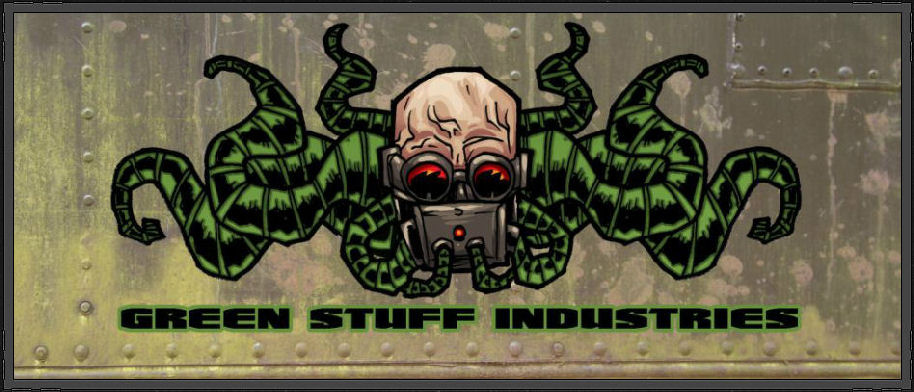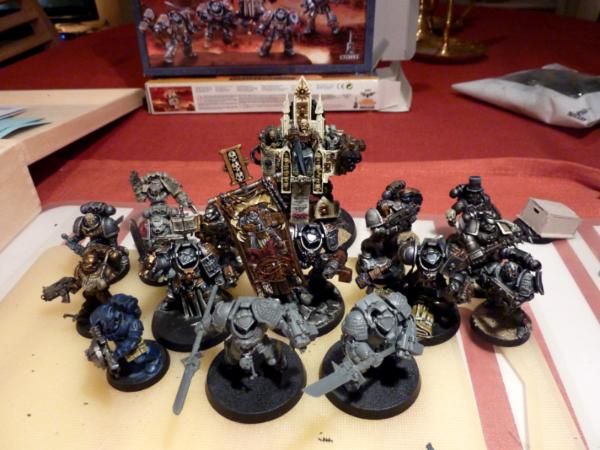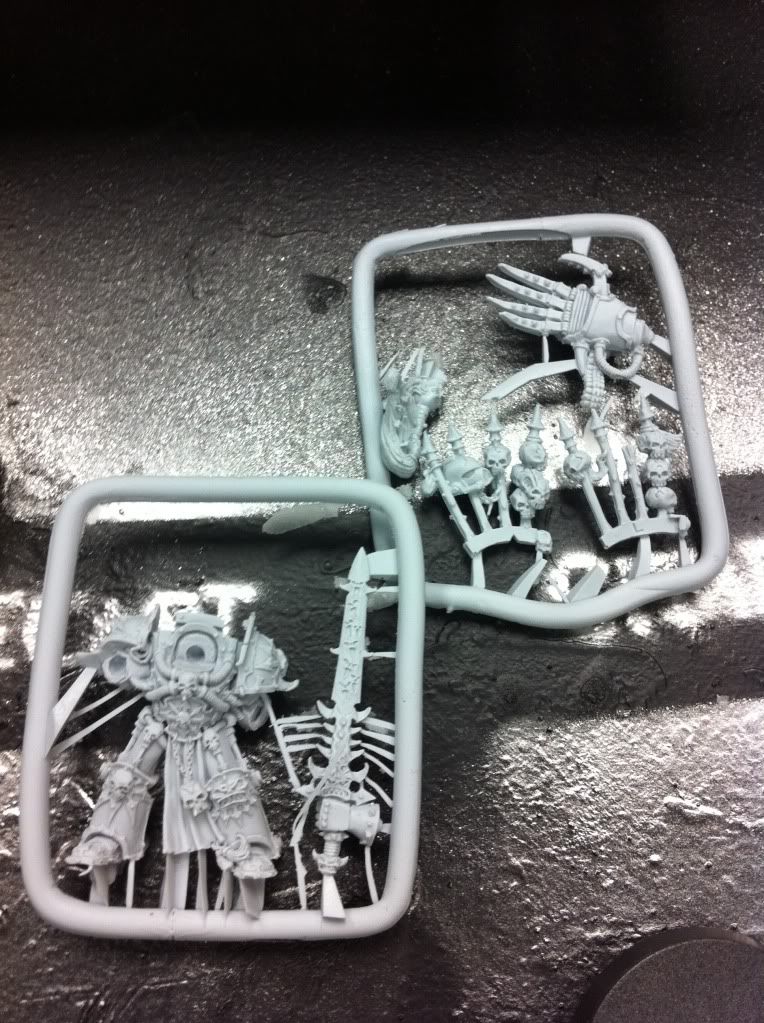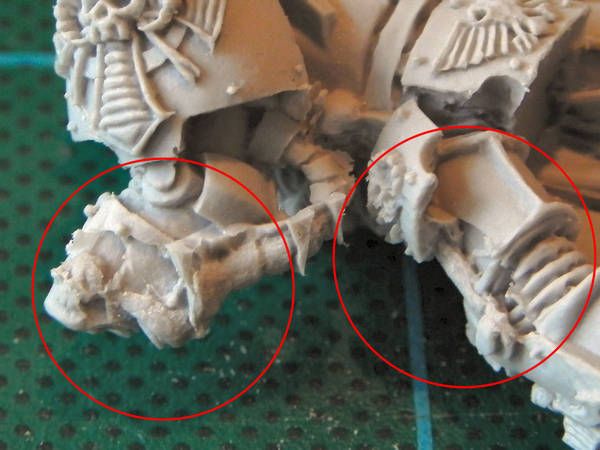by Gabriel Diaz
One of the things that many players and hobbyists don’t think about when they start a project is that not all miniatures are created equal. Well at least not at first. After one cracks their teeth on a particularly tough figure a couple of times we begin to realize that while our mind’s eye has one idea, our abilities can only give that image so much life. This hobby entrenches you in how detailed you can get with a figure. You can go the three color route, you can decide to give more depth, you can decide to give more realism or you can even decide to create a diorama where you’re basically telling a story in a three dimensional painting. The possibilities are currently endless because as the hobby grows we have begun to realize that there is so much more that we can accomplish, we’ve barely begun to scratch the surface of the hobby that we’re all invested in.
That being said, while there are numerous ways for us to express our artistic visions, the mediums that we use to convey those images are a shorter list. While there are literally dozens of different studios and companies vying for your hard earned money to purchase their wares, you only have three different materials to choose from when deciding what miniature to buy.
So let’s break them down and give some pros and cons shall we?
Plastic
Probably one of the most loved mediums in any hobby, plastic is arguably the preferred medium that miniature hobbyists like to use. Part of it is that plastic is lighter weight; another part is that cleansing of the medium is a bit easier. For the most part, with the exception of a couple of companies this is a rare one to get a hold of. Many wonder why that is (myself included) and I can come up with a good argument or two. The bottom line is that usually only the heavy hitters use this type of material. I believe that this comes down to the bottom line of the company itself. In making plastic miniatures you can mass produce at a fast clip and because you have the backing to have a back stock, it’s okay for these bundles to sit in storage until the demand sends these little bits of ‘plastic crack’ to your local game store or even your front door.
Of the three mediums that we regularly see, this is the most coveted. GW makes multipart kits which means that the figures don’t come assembled, you have a variety of weapons, arms, heads and possibly legs to choose from to individualize your figures in the manner that you see fit. With these multi-part boxes you also see a lot of what’s called ‘kit-bashing’ which is when you take pieces from several different box sets and combining to come up with a figure of your own design, within the limitations of what you have on hand (Or your imagination) Places like Green Stuff Industries sell third party tools to help you create the looks that you want with additional tentacles, gear and the like. So overall this is pretty much the Mecca of mediums for us.
Pewter/Metal

The more commonly seen of all the mediums, pewter (Or metal depending on who you talk to) is what most companies use to make their figures. These figures are usually in one piece. There is no customizing for most of these figures, kit bashing is close to impossible with the exception of some figures that may come in several pieces. But even then, consider that pewter is obviously heavier than plastic. So while that general would look really cool with those legs that have him on one knee, you have to think about whether that lower plastic body could really support that pewter top half or will it make the figure itself top heavy and wobbly? It’s an imperfect medium, to say the least, but companies like Reaper put out their figures in this material in part to recoup their money for production and in part because the molds used to make pewter figures are more cost effective than molds used to make plastic models. In this instance GW has most of the market cornered. Because of their well respected games and well known name, they’ve been able to build up a sizeable company where making plastics is beneficial both to them and the players.
There is less clean up of a new pewter model than there is for plastic. Typically, all you have to worry about is excess flash. You won’t usually see mold lines because it’s a one piece mold, instead of two pieces coming together to make the figure or pieces that will make the model. There is seldom any miscasting. This is because pewter is in a molten form when poured and as it cools it takes the shape of the mold. Washing of the figure is almost mandatory as there is a residue on the model from the mold it was cast in. The residue makes it difficult for the figure to take on the paints that you’re trying to use to get it to have the look you want it to have.
Heavy, a bit more expensive and less customizable, pewter isn’t the most attractive medium to have to use in some instances. But in others, with independent characters, monstrous creatures, or even vehicles it can make those details pop out for you once the figure it nicely painted and ready for use or display.
Resin
Resin is a widely used for the secondary market. You know how normally figures come on square or round plastic bases? Most companies that make bases that already have texture or theme, such as city ruin or wetlands (Secret Weapon Miniatures comes to mind) those are made from resin. They’re good quality, you get a good bang for your buck because, let’s be honest, we’re not about to buy one scenic base for our bigger figures but not have the rest of the figures associated with him have the same base. No, usually you’re off buying 30 to 40 bases at one go to try and get as many figures in cohesion as possible. Resin makes it possible for this to happen. Those cool details that you see on those bases are a result of a pliable resin. Again put into a mold to make exceptional bases. You might have to clean up the outer edge on a resin base, lots of little extras that might have seeped out of the mold and stayed connected, but generally it’s a quick cleaning. Then paint it up, and viola, you have yourself a nice looking base.
As a base, resin is durable. It's so dense that it takes a lot for one of them to crack. Resin is almost as light weight as plastic and manufacturing it is cheaper than pewter. So I can see why it’s used to make bases.
That’s as far as I go with my understanding. GW within the last year decided to do away with their pewter figures and instead put out the same models in Resin, which they dubbed Finecast. Depending on who you ask it’s called Finecrap by hobbyists that have run afoul of it.
The problem with Resin is that it is highly pliable and at the production level, if it’s not overseen properly, you will end up with bubbles or miscasts. When GW switched to resin (and still is at this point, but not as much) there were miscasts that were from just having a bubble in an arm to having a whole head look like it had been struck by a shotgun shell because the resin hadn’t settled properly.
Again, Resin is very pliable, so this also means that the finer details in the figures, like swords and the like, are easily warped due to heat. So that figure might have been perfectly cast, and then boxed and shipped during some hot days and when it reaches your store the sword looks more like a stage prop than it does something to be feared. For a while it was so bad that people who purchased the figures would first open the shell case the figure came in to make sure that it wasn’t a defective product, because the thing is that if you get a defective product you can still get a replacement, but not from the store that you bought it through. Usually you have to go straight through GW for that and while their customer service is top notch, the time to get it sent to you could be long.
There is a rumbling going around (I don’t know if this is accurate or not, if one of you faithful readers knows the answer please help my anxiety about it) that if you leave your resin figures in a hot car for a long period of time there is a high possibility that your figure will melt. I recently received several Dark Eldar figures, some of which were indeed Finecast (I have a very threatening looking figure with what appears to be a bad case of sword dysfunction) I was leery of trying to play them at my local store because I would have to pack them into my car that morning, leave them there while I worked my shift and wouldn’t come out of the car until almost six in the afternoon. That’s over eight hours in the car with the heat building and then ebbing. Cars are horrible for keeping heat. I was loathe to risk it and suddenly find a very expensive puddle of resin in foam.
Out of the three mediums to me this is the step child that no one wants in large amounts. As a solid base, resin is fantastic and well worth it. But, as a twenty dollar and up figure with intricate detail and importance? Not so much. It’s so bad that people who are looking for particular figures that are now only produced in resin from GW will try to find the metal equivalent that is no longer produced from other collectors/hobbyists in hopes of not having to deal with it.
Paint-wise I believe that Resin is more like plastic than it is pewter. Easier to work with, in that aspect, and captures paint exceptionally well, which is always a plus. I would recommend washing the figure in warm soapy water before trying to paint it, again there is residue on the model from casting and it may impede the paint from laying properly on the model.
So there you have it, the breakdown of the three most commonly found mediums that our figures come in. If you have anything to share or ask, as always feel free to do so in the comments section. Thanks for reading!







No comments:
Post a Comment